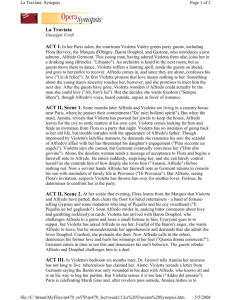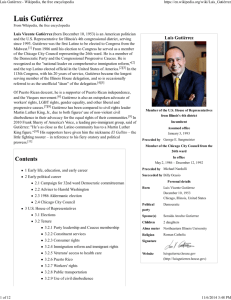It has been repeatedly heard on these days that there is a new
advertisement
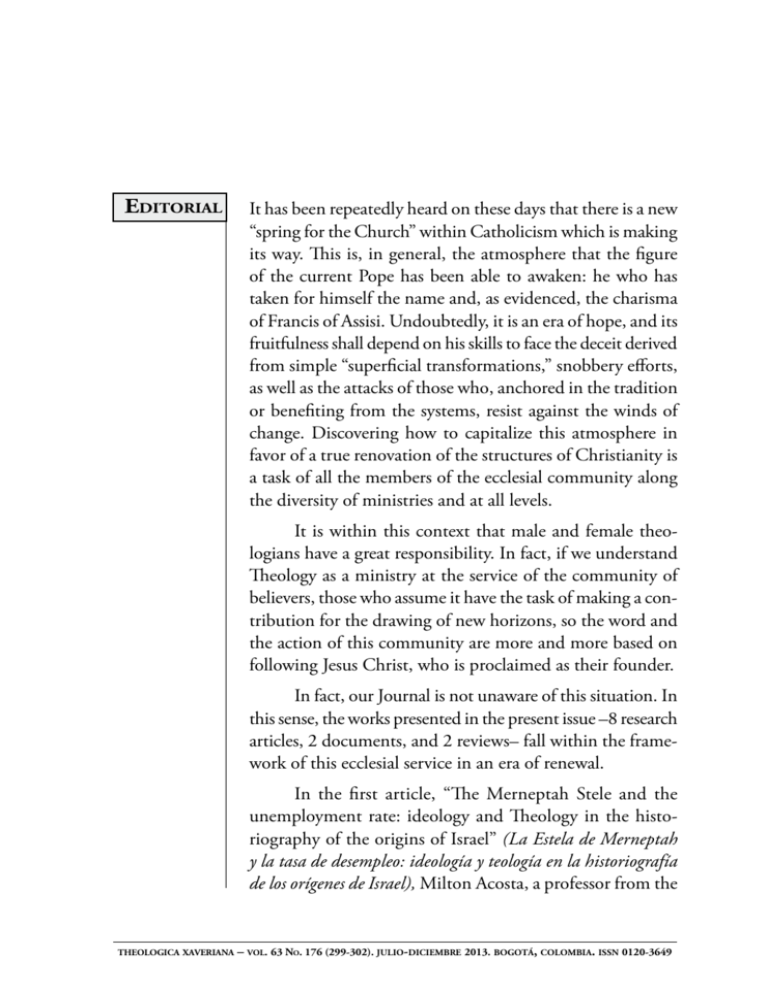
Editorial It has been repeatedly heard on these days that there is a new “spring for the Church” within Catholicism which is making its way. This is, in general, the atmosphere that the figure of the current Pope has been able to awaken: he who has taken for himself the name and, as evidenced, the charisma of Francis of Assisi. Undoubtedly, it is an era of hope, and its fruit­ful­ness shall depend on his skills to face the deceit derived from simple “superficial transformations,” snobbery efforts, as well as the attacks of those who, anchored in the tradition or benefiting from the systems, resist against the winds of change. Discovering how to capitalize this atmos­phere in favor of a true renovation of the structures of Christianity is a task of all the members of the ecclesial co­mmunity along the diversity of ministries and at all levels. It is within this context that male and female theo­ logians have a great responsibility. In fact, if we understand theology as a ministry at the service of the community of believers, those who assume it have the task of making a con­ tribution for the drawing of new horizons, so the word and the action of this community are more and more based on following Jesus Christ, who is proclaimed as their founder. In fact, our journal is not unaware of this situation. In this sense, the works presented in the present issue –8 re­search ar­ticles, 2 documents, and 2 reviews– fall within the frame­ work of this ecclesial service in an era of renewal. In the first article, “The Merneptah Stele and the unem­ployment rate: ideology and theology in the histo­ rio­graphy of the origins of Israel” (La Estela de Merneptah y la tasa de desempleo: ideología y teología en la historiografía de los orígenes de Israel), Milton Acosta, a professor from the theologica xaveriana – vol. 63 No. 176 (299-302). julio-diciembre 2013. bogotá, colombia. issn 0120-3649 Fundación Universitaria Seminario Bíblico de Colombia, presents an outlook on the studies concerning the historical origin of Israel. The text emphasizes the debate on the his­­to­ ricity of the biblical narrations and the influence of ideologies, both on the writers of the Bible and on those who study it. The article by Agenor Brighenti, a professor from the Pon­tificia Universidad Católica de Paraná, titled “New evan­­gelization and pastoral conversion: an approach from the Church in Latin America and the Caribbean” (Nueva evangelización y conversión pastoral: un abordaje desde la Iglesia en América Latina y el Caribe), studies the new evan­ gelization, already proposed by the Medellin Con­ference, as an obligation vis-à-vis the challenge of keeping the novelty of the Gospel always alive and updated. He pro­poses taking up the expression “pastoral conversion” again, as formulated by the Santo Domingo Conference and then assumed again by Aparecida, in order to keep said obligation alive. 300 Jorge Castillo Guerra, a professor from Radboud University, Netherlands, in his article “The theology of mi­ gration: human mobility and theological transformations” (Teología de la migración: movilidad humana y transforma­ ciones teológicas), analyzes the meaning of the transformations of the identity and faith of migrants, as well as its impact on the un­derstanding and development of theology. The research, which undertakes an intercultural and transnational approach vis-à-vis human mobility, formulates an intercul­ tural transformation of theology expressed through the “theology of migration” category. Gelci André Colli and Willibaldo Ruppenthal, pro­ fessors from the Faculdade Teológica Batista do Paraná, in their article “A ambivalência humana: uma perspectiva cristã,” state that a Christian anthropology may overcome the dualisms without disregarding the inherent tension of the human being. To attain this, it is necessary to change the divalent logic for a relational-related perspective that allows editorial josé alfredo noratto gutiérrez acknowledging the ambivalence of body and soul as a cons­ titutive structure of the human nature. In the article “The role of religion in the life of peo­ ple according to the psychology of religion” (Función de la religión en la vida de las personas según la psicología de la religión), written by Nelson Mafla, a professor of the Pon­ tificia Universidad Javeriana, there is an approach concerning re­ligion as a phenomenon with sense, utopia, support, vital force, and hope against adversity, pain, and death. Thanks to the use of classical authors of psychology of religion, the func­tion of religious beliefs is recovered with the purpose of building and leading the vital processes of the men and women of the 21st century. Víctor Martínez Morales, S.J., a professor of the Pon­­­­­ti­ ficia Universidad Javeriana, in his article “Our Latin American Church fifty years after Vatican II) (Nuestra Iglesia lati­noa­ mericana a los 50 años del Concilio Vaticano II), states that the life of church communities in Latin America and the Caribbean is an eloquent concrete result of theological ideals as the Church - People of God, the Church of the poor, and the Church of communion and participation. In this way, he suggests and discovers a “Latin American ecclesiology,” an heir to Vatican II and to the theology of libe­ration, not in the documents of the Church but in the day-to-day interaction of the members of the communities of believers, the true leading characters of ecclesial life. In the article “The ‘illative sense’ at the stage of truth according to John Henry Newman” (El ‘illative sense’ en la ins­tancia verita­tiva según John Henry Newman), written by Fran­cisco Sán­chez Leyva, a Salesian from Mexico, the author studies the epistemological legitimacy of the affirmation that a thin­king subject renders vis-à-vis a to religious or faithrelated truth thanks to the possibility that every human being has of justifying his or her beliefs from a rational perspective. It is from this key concept –states the author– theologica xaveriana – vol. 63 No. 176 (299-302). julio-diciembre 2013. bogotá, colombia. issn 0120-3649 301 that it does not seem arbitrary to consider the systematicity of the grammar of religious consent as a chance for the design of a renewed gra­mmar of faith. To conclude, Andrea Sánchez Ruiz, a professor of the Uni­ver­sidad Católica de Argentina, in her article “Towards new types of coexistence in the ecclesial family” (Hacia nue­vas formas de convivencia en la familia eclesial), intends to reconsider the patterns of community life within the Church from the features and organization of family tables. If we take into consideration the way Jesus acted at the tables he par­took of, and if we acknowledge true domestic chur­ ches in the families, it is possible to discover there guidelines for the evangelical renovation of interchurch communion and par­ticipation. 302 We find two texts in the document’s section. First, a paper by Alfonso Llano Escobar, S.J., on the topic of the “Pro­bable origin of the Humanae Vitae encyclical” (Probable origen de la encíclica Humanae Vitae); second, a biographical sketch, written by Germán Neira, S.J., of Mario Gu­tiérrez, S.J. (+), who was a teacher of our School for over thirty years. There are two reviews in the bibliographical section. The first one, by Luis Ignacio Sierra, on the text by Antonio Spadaro, “Thinking Christianism in the digital cyberspace” (Pensar el cristianismo en el ciber­espacio digital); the second one, written by Manuel Hurtado S.J., is an introduction to the text “Christian faith and the sense of work” (Fe cristiana y sen­tido del trabajo) by Elio Estanislao Gasda. The documents included in this issue strengthen the purpose of Theologica Xaveriana of rendering a quality aca­ demic service to the theological community, to the Church, and to the society. José Alfredo Noratto Gutiérrez, Ph.D. Editor editorial josé alfredo noratto gutiérrez

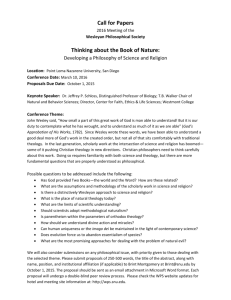
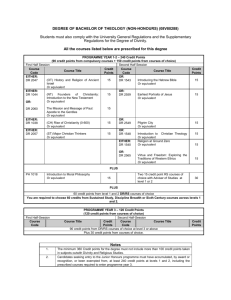
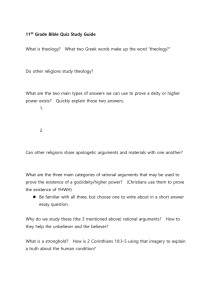
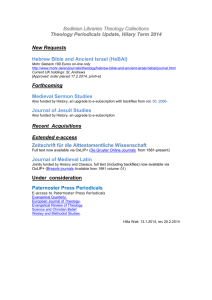
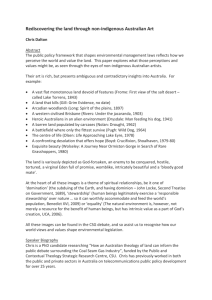
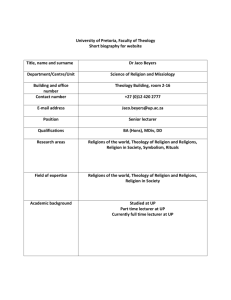
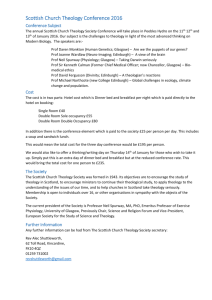
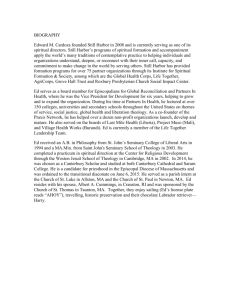
![Corn_moms_clean2[1].doc](http://s2.studylib.net/store/data/015297753_1-5ffdfeba8f157e43000a40be860cf2c9-300x300.png)
